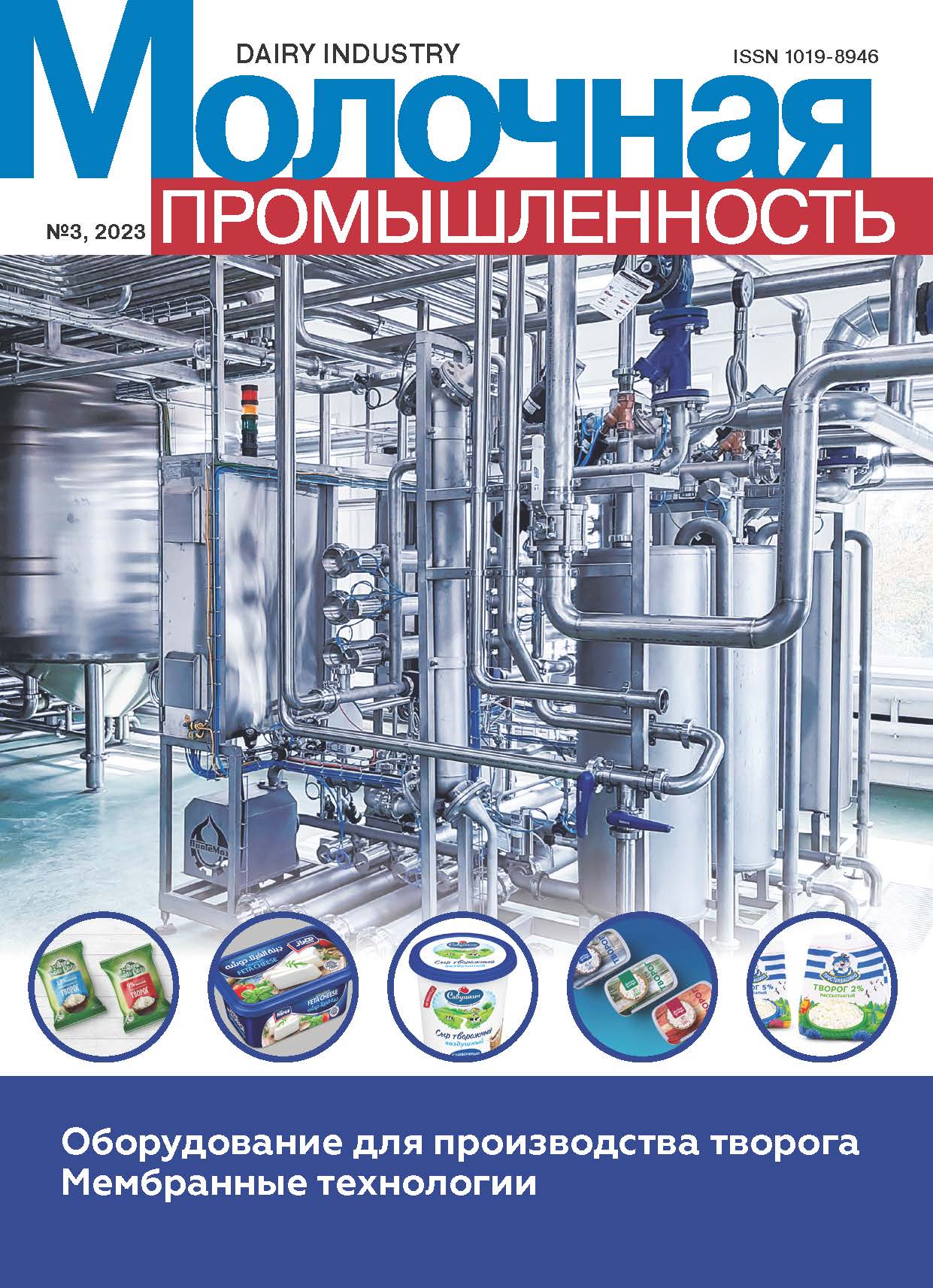Minsk, Belarus
Minsk, Belarus
Minsk, Belarus
Stavropol', Stavropol, Russian Federation
Stavropol, Russian Federation
Stavropol, Russian Federation
Stavropol, Russian Federation
Deep whey protein hydrolysates (WPHs) exhibit hypoallergenic properties. However, low molecular weight peptides included in their composition have a bitter taste. To use protein hydrolysates as a component of functional foods, it is necessary to exclude the interaction of peptides with bitter taste receptors. For this, the peptides are included in the composition of the nanocomplex with cyclodextrin (β-CD). Amino acids of the peptides enter the hydrophobic cavity of β-CD, due to which their interaction with receptors is shielded. The composition of such a complex includes up to 78 % of the peptides included in the WPH. As part of the WPH:β-CD complex, the bitterness of the peptides decreases from a very bitter taste (10 points) to a weak bitter taste (5 points), which makes it possible to use it in functional foods. It was also shown that due to the electrostatic interaction between the amino and carboxyl groups of the peptides with positively charged chitosan (CS) or negatively charged succinylated chitosan (SCS), high-molecular complexes are formed. Due to steric hindrance, they do not interact with bitter taste receptors. High-molecular-weight complexes SCS-WPH and CS-WPH have a weak bitter taste (5 points), due to which they can be used in dietary nutrition.
cyclodextrin, chitosan, succinylated chitosan, whey peptides, biocomposites of chitosan and cyclodextrin
1. Golovach, T.N. Allergennost' belkov moloka i puti ee snizheniya/ T.N.Golovach, V.P.Kurchenko// Trudy BGU. 2010. T. 5. Ch. 1. S. 9-55.
2. Mohd Adnan Kausar. A review on Respiratory allergy caused by insects/ Mohd Adnan Kausar// Bioinformation. 14(9): 540-553 (2018) doi:https://doi.org/10.6026/97320630014540
3. Simon, D. Recent Advances in Clinical Allergy and Immunology 2019/ D.Simon// International Archives of Allergy and Immunology. 2019. 1-15. doihttps://doi.org/10.1159/000504364 ].
4. Halavach, T.M. Biologically active properties of hydrolysed and fermented milk proteins/ T.M.Halavach, N.V.Dudchik, E.I.Tarun, V.G.Zhygankov [et al.]// The Journal of Microbiology, Biotechnology and Food Sciences. 2020. V. 9. No 4. P. 714-720. DOI: https://doi. org/10.15414/jmbfs.2020.9.4.714-720.
5. Golovach, T.N. Harakteristika biologicheski aktivnyh gidrolizatov belkov molochnoy syvorotki i moloziva/ T.N.Golovach, E.I.Tarun, N.V.Dudchik, R.V.Romanovich [i dr.]// Izvestiya Nacional'noy akademii nauk Belarusi. Seriya biologicheskih nauk. 2018. T. 63. № 4. S. 409-418.
6. Yang, P. Sensory directed flavour analysis of off-flavour compounds in infant formula with deeply hydrolyzed milk protein and their possible sources/ P.Yang, C.Liu, H.Song, L.Wang [et al.]// LWT - Food Science and Technology. 2020. V. 119. 108861. DOI: https://doi.org/10.1016/j.lwt.2019.108861.
7. Liang, S. A review of the preparation, analysis and biological functions of chitooligosaccharide/ S.Liang, Y.Sun, X.Dai// International Journal of Molecular Sciences. 2018. V. 19(8). 2197. DOI: https://doi.org/10.3390/ijms19082197.
8. Halavach,T.M. Antimutagenic and antibacterial activity of β-cyclodextrin clathrates with extensive hydrolysates of colostrum and whey/ T.M.Halavach, E.S.Savchuk, A.S.Bobovich, N.V.Dudchik [et al.]// Biointerface Research in Applied Chemistry. 2021. V. 11(2). P. 8626-8638. DOI: https://doi.org/10.33263/ BRIAC112.86268638.
9. Tolstoguzov, V. Thermodynamic aspects of biopolymer functionality in biological systems, foods, and beverages/ V.Tolstoguzov// Critical Reviews in Biotechnology. 2002. V. 22. No 2. P. 89-174.
10. Deka, B.C. DFT study on host-guest interaction in chitosan-amino acid complexes / B.C.Deka, P.K.Bhattacharyya// Computational and Theoretical Chemistry. 2017. V. 1110. P. 40-49. DOI: https://doi.org/10.1016/j.comptc.2017.03.036
11. Kurchenko, V.P. Vliyanie hitozana na prodlenie sroka hraneniya kislomolochnyh produktov s Lactobacillus acidophilus/ V.P.Kurchenko, T.N.Golovach, K.I.Mayorova, M.I.Shramko [i dr.]// Molochnaya promyshlennost'. 2022. № 3. S. 52-55.
12. Kurchenko, V.P. Influence of Molecular Weight of Chitosan on Interaction with Casein/ V.P.Kurchenko, T.V.Radzevich (Butkevich), S.V.Rizevskya, V.P.Varlamov [et al.]// Applied Biochemistry and Microbiology. 2018. V. 54. No 5. P. 501-504. DOI:https://doi.org/10.1134/S0003683818050113
13. Kurchenko, V.P. Ispol'zovanie hitozana dlya polucheniya kazeina/ V.P.Kurchenko, T.V.Radevich (Butkevich), S.V.Rizevskiy [i dr.]// Molochnaya promyshlennost'. 2018. № 4. S. 56-57.
14. Kurchenko, V.P. Multicomponent Composites of Cyclodextrin Nanocomplexes with Biologically Active Substances for Functional Foods/ V.P.Kurchenko, T.M.Halavach, N.V.Sushynskaya, E.I.Tarun [et al.]// Food Processing: Techniques and Technology. 2022. V. 52(2). P. 375-389. (In Russ.). https://doi.org/10.21603/2074-9414-2022-2-2370.
15. Plasek, B. Evaluation of the role of functional food products indisease prevention and the characteristics of target groups/ B.Plasek, Z.Lakner, G.Kasza, Á.Temesi// Nutrients. 2019. 12(1): 69, pp. 1-19.OIhttps://doi.org/10.3390/nu12010069.







